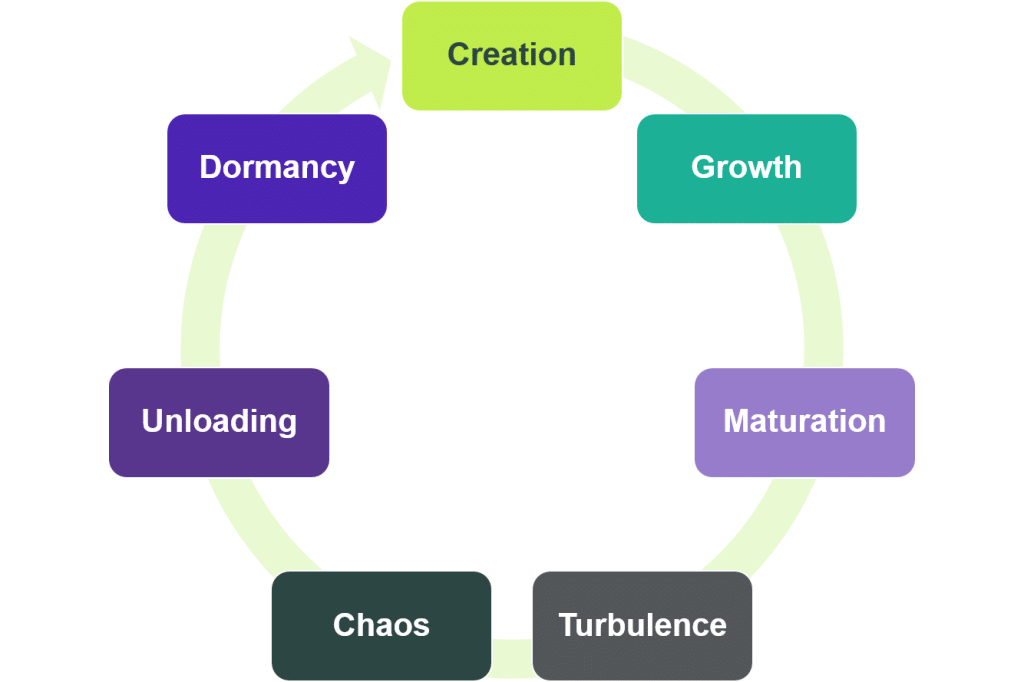
Struggling with team underperformance and burnout?
Surprisingly, this approach to dealing with underperformance and potential burnout runs counter to the natural cycle of things. In order to thrive, we miss that in times of turbulence and chaos, we need to take things away rather than add more things on. If we look at how “life” cycles through itself (for example, a tree), we see it tends to follow a progression through a series of change stages1: Creation (when something new begins); Growth (when it starts to form and expand); Maturation (when it gets more complex and systemized); Turbulence (when complexity can no longer be supported); Chaos (when the system begins to fall apart); Unloading (when the unnecessary starts to drop off); and Dormancy (when the system quiets and resets itself). Then, the cycle begins again. Our business life, as well as our personal life, typically follows the same natural progression. We run into performance issues and team burnout when we get “stuck,” particularly as things become more turbulent or chaotic.
What change stage are you, your team, and the business in?

Solving the Performance Equation

Example of a Lime Treatment Pathway to Turn Around
Team Underperformance and Burnout



Do you have the proven ingredients to solve the Performance Equation?
1 Adapted from: Hallbom, K. (2020). The universal cycle of change. Retrieved February 1, 2024, from: https://krishallbom.com.





